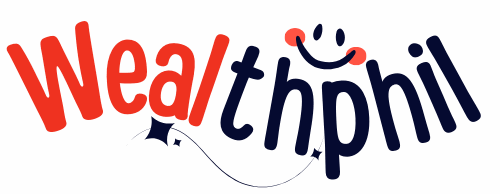Have you ever come across an interesting topic but weren’t sure how to make it several posts? There’s no reason to be alone. Many writers struggle with this issue. But here’s the answer: each topic is a multi-layered one. When you explore these layers and tell them in different ways and present them in a compelling way, you can create engaging SEO-friendly, engaging content that readers will love.
Additionally, breaking topics into shorter stories enhances the readability of your content, which helps you increase your search engine rankings and also keeps your audience returning to read more. This guide will guide you through the steps to accomplish this using simple strategies that anyone can learn to follow.
Your Topics: Multiple Stories
Let’s suppose that your blog writing topic is “Healthy Eating.” Now it’s possible to write an enormous blog post. However, if you examine it carefully, there are a lot of details hidden within:
- How do you choose healthy foods?
- How sugar can affect your energy levels
- Tips to prepare meals for busy students
- Easy recipes for a nutritious breakfast
- Understanding food labels
See? One topic, Many stories. It’s exactly what “your Multiple Stories topics” refers to. It is a way to take a theme and split it into smaller sections, each one with a different angle. It’s simpler to read. It’s also more enjoyable to write!
What’s the reason to Divide Your Topic into multiple stories
The process of breaking down an idea into smaller pieces helps anyone to grasp it. Consider an entire textbook without chapters. It’s overwhelming. But small, focused chapters can help you learn more quickly.
Furthermore, search engines such as Google favor structured content. If each blog post is focused on one specific idea, it’s more likely to be ranked higher. People stay longer on the site because they are able to find what they’re searching for in a short time.
Using Headings to Organize Your Stories
Headings don’t only serve as a way to look. They help your readers navigate and let them know what they can expect. Consider them as a waypoint on a long path. With clear and concise headings, users can easily navigate to the area they’re most interested in.
Here’s a basic format for writing a blog post:
- Principal heading (H1): Your main subject
- Subheadings (H2): Each of your smaller stories
- Sub-subheadings (H3): Details in every story
This method helps keep everything neat, tidy, and easy to read.
Transition Words Make Your Writing Flow
Words such as “however,” “because,” “for instance,” “next,” and “finally” are all transition words. They join your thoughts and aid in helping readers follow your thoughts. Like glue, they bind everything together.
For example, instead of declaring:
Write about healthy snacks. Write about sugar.”
Try:
Write about healthy foods. In the meantime, talk about the effects of sugar on your energy levels.”
The second version reads more fluid, does it not?
Start With the Most Important Info First
This is a standard journalism trick called”the inverted pyramid.” Begin by stating the most important idea. Then, you can elaborate. Readers want to understand the basic idea immediately. Don’t put off the best stuff to the end!
Use Simple Words for a Clearer Meaning
Make sure you use words that a 9th grader would be able to comprehend. This isn’t because people aren’t intelligent, but because clear writing is easier to comprehend. For instance:
- Make use of “help” in place of “assist”
- Make use of “start” in place of “commence”
- Utilize “check” in place of “verify.”
This will make your blog more welcoming and easier to read.
Keep Sentences Short and Snappy
Short sentences are more effective online. Long sentences seem like a walk for a long time. If you have more than twenty words within a paragraph, cut it in two.
Example:
“Healthy snacks are simple to make, delicious to eat, and offer your body the nutrition it requires to excel at school and during sports.”
Better:
“Healthy snacks are simple to make. They taste delicious and give your body the nutrients it requires to perform at school and during sports.”
Limit Passive Voice
Passive voice conceals the subject of the statement. In place of saying “Snacks consumed by the students,” use the phrase “The students ate the snacks.” It’s easier to understand and has a more natural sound. Maintain passive voice to less than 10% to ensure readability.
Vary Your Sentence Structure
A song has high and low notes. Your writing requires rhythm. Combine sentences of both length and short. Use questions. Try exclamations. This will keep your blog interesting!
Use Images to Break Up Text
Text that is a wall is enough to scare readers away. Images can break up the monotony and help explain your subject more effectively. For example, if you’re writing about eating out, include images of food items. Are you writing about fitness? Include workout pictures.
Make Paragraphs Digestible
Each paragraph should focus on an idea. Keep them under four lines, if you can. Text that is too long appears difficult to read, particularly on mobile screens.
Include Examples Wherever You Can
Readers are more able to comprehend when they are shown examples. Instead of saying “Write brief sentences,” it is possible to show
Bad: “The health benefits of eating carrots …”
Good: “Carrots are good for your eyes and skin.”




